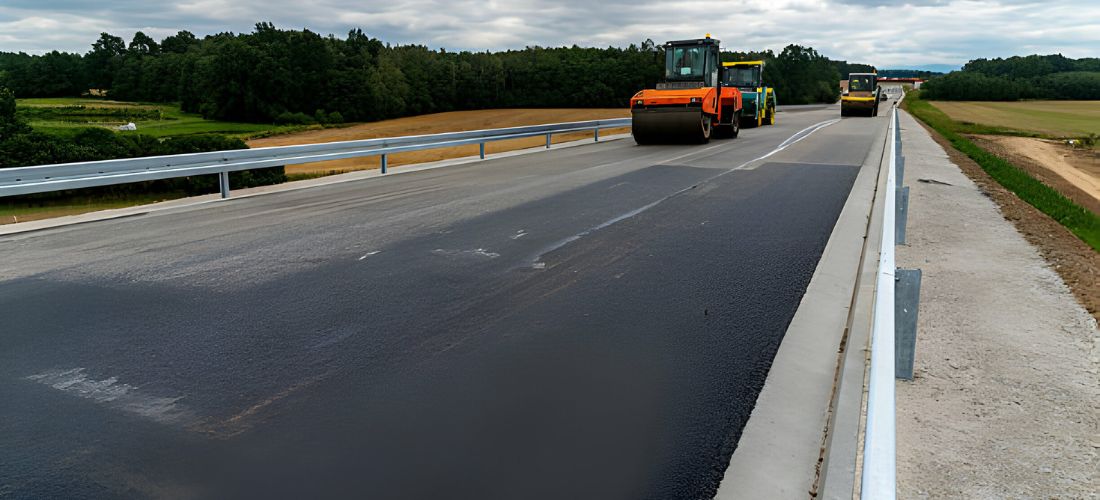Roads play a vital role in facilitating transportation, connecting people and goods to their
destinations. However, maintaining road infrastructure is an ongoing challenge faced by
governments and transportation authorities worldwide. From routine upkeep to extensive
rehabilitation projects, road maintenance encompasses a wide range of activities aimed at
ensuring the safety, durability, and efficiency of transportation networks. In this article, we delve
into the various types of road maintenance and their significance in sustaining our roadways.
- Routine Maintenance
Routine maintenance forms the backbone of road upkeep, encompassing regular tasks aimed at
preserving the condition of road surfaces and ensuring safe travel for motorists. Key activities
include:
Pothole Patching: Repairing potholes promptly prevents further deterioration of road surfaces
and minimizes hazards for vehicles.
Crack Sealing:Sealing cracks in the pavement prevents moisture intrusion, which can lead to
further damage and degradation.
Debris Removal: Clearing debris such as leaves, branches, and litter from roadways enhances
safety and prevents drainage issues.
Sign and Signal Maintenance: Ensuring the visibility and functionality of road signs and traffic
signals is essential for guiding motorists and maintaining traffic flow.
Routine maintenance activities are typically performed on a scheduled basis to address minor
issues before they escalate into more significant problems. - Preventive Maintenance
Preventive maintenance aims to extend the service life of road infrastructure by proactively
addressing potential sources of deterioration. Common preventive maintenance techniques
include:
Surface Treatments: Applying seal coats, slurry seals, or microsurfacing treatments protects the
road surface from weathering and prolongs its lifespan.
Pavement Markings: Repainting pavement markings and refreshing road signage enhances
visibility and safety for motorists.
Shoulder Maintenance: Maintaining road shoulders prevents erosion, enhances drainage, and
provides a safe refuge for vehicles.
By implementing preventive maintenance measures, transportation agencies can reduce the
need for costly repairs and extend the interval between major rehabilitation projects. - Corrective Maintenance
Corrective maintenance involves addressing specific issues or deficiencies identified through
routine inspections or public feedback. Examples of corrective maintenance activities include:
Ditch Cleaning: Clearing roadside ditches and culverts prevents water accumulation and
minimizes the risk of flooding or erosion.
Guardrail Repair: Repairing damaged guardrails and safety barriers enhances roadside safety
and protects motorists from hazards.
Tree Trimming: Pruning overhanging branches and vegetation improves visibility and reduces the
risk of tree-related accidents.
Corrective maintenance tasks are typically responsive to identified problems and may be
prioritized based on severity and impact on road safety.
- Rehabilitation and Reconstruction
Rehabilitation and reconstruction projects involve extensive repairs or upgrades to restore or
enhance the structural integrity and performance of roadways. Common rehabilitation techniques
include:
Resurfacing: Applying new asphalt or concrete overlays to rehabilitate deteriorated road surfaces
and improve ride quality.
Reconstruction: Complete reconstruction involves replacing the existing roadbed and pavement
to address significant structural deficiencies or accommodate increased traffic volumes.
Bridge Rehabilitation: Repairing or replacing bridge decks, superstructures, or substructures
ensures the continued functionality and safety of vital transportation infrastructure.
Rehabilitation and reconstruction projects are often more capital-intensive and time-consuming
than routine maintenance activities but are essential for ensuring the long-term viability of
transportation networks.
Conclusion:
Road maintenance is a multifaceted endeavor that encompasses routine tasks, preventive
measures, corrective actions, and extensive rehabilitation efforts. By understanding the different
types of road maintenance and their respective roles, transportation agencies can develop
comprehensive maintenance strategies to ensure the safety, reliability, and sustainability of our
roadways. Whether it’s filling potholes, applying surface treatments, or undertaking major
reconstruction projects, each aspect of road maintenance contributes to the overall goal of
providing safe and efficient transportation infrastructure for communities around the world.

